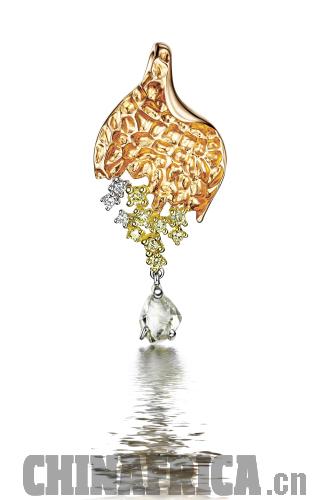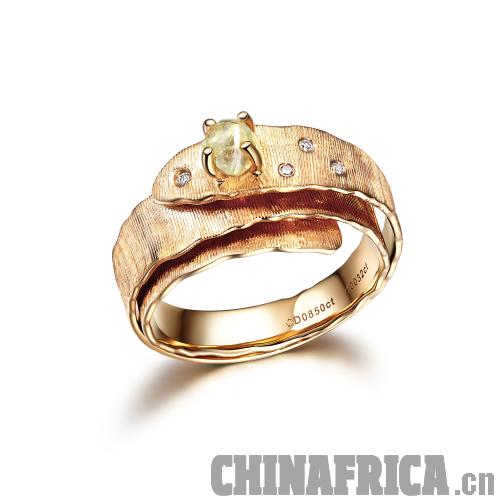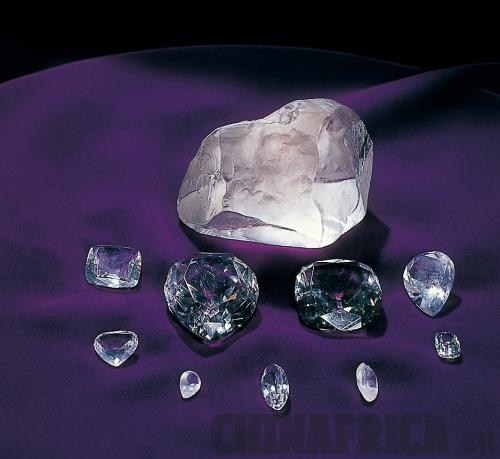|

Market positioning
S.A. Michael Diamonds has been operating in China's diamond retail market for nearly a decade and now has approximately 66 stores across China, reporting an annual sales growth of 40 percent.
Chen believes that for Chinese who are pursuing a better lifestyle and hankering after luxury products, a plain diamond is not enough. He said more and more local consumers want diamonds that have a unique quality or design that gives the owner an air of exclusivity.
"One key to our fast growth [in the Chinese market] is we grasped the consumers' love for tailor-made diamonds, either loose [diamonds] or others set in rings and necklaces, and established our brand image of high-end fashion," he told ChinAfrica.
The company's future plans will focus on selling diamonds suitable for investment. These usually have a weight of more than 1 carat, as the number of Chinese buyers opting for larger stones for investment is increasing, according to figures from Gems & Jewelry Trade Association of China.
S.A Michael Diamonds' market share is still small although their overall diamond sales are growing annually. Chen said that the Chinese market needs time to fully accept African-style diamonds products. "We are pursuing a dual market strategy for the high- and middle-end market, offering South African style diamond jewelry blended with Chinese culture, so as to boost the brand's recognition," said Chen.
S.A. Michael Diamonds owns a diamond cutting factory in Shenzhen, south China's Guangdong Province, the country's leading jewelry processing center, as well as a jewelry design, research and development center in Beijing.
Although headquartered in Beijing, the company has operated stores in southern and central regions across China for years. The brand seeks to gain a firm foothold in the second- and third-tier market before entering the first-tier market, according to Chen.
On the back of high Chinese demand, S.A. Michael Diamonds opened another three outlets in Beijing earlier this year. In the first 10 days since opening, the outlet in Beijing's Guohua Shopping Mall earned 200,000 yuan ($31,747) in sales, and has since achieved monthly sales of 500,000 yuan ($79,365). Rough diamonds and Tanzanite jewelry are currently the most sought-after gemstones by the local customers, the company reported.
According to the Hong Kong Jewelry & Jade Manufacturers Association President Gilbert Lau, the outlook for global diamond demand remains positively driven by China. This is due to the country's long time double-digit growth and the Chinese habit of saving, which provides a huge source of funding to support the growing demand for jewelry. Lau said Chinese consumer groups are becoming a major driving force of global jewelry demand. This also provides S.A. Michael Diamonds development opportunities in China, a country with a traditionally high affinity for gold.
Carrying culture
S.A. Michael Diamonds not only makes efforts to spread the African culture through its products, but also bears the responsibility of promoting Sino-African corporate communications and cooperation. Officials from South Africa's Department of Minerals and Energy have repeatedly expressed their hope that S.A. Michael Diamonds attracts more Chinese enterprises to invest in South Africa. "As South Africa produces prestigious platinum and colored gemstones, they are eager for Chinese investment in this regard," said Chen.
Jewelry processing is a traditional Chinese craft, with a long history deeply steeped in culture. It has evolved to become a superb modern handicraft art, attracting the attention of Africa.
Since 2006, the company has offered three training sessions for workers dispatched by South Africa's Department of Minerals and Energy in terms of diamond cutting, polishing and mosaic, with a total of 35 South African trainees awarded the certificate of National Gemstone Training Center.
Yang Mei, Marketing Officer of the South African Embassy in China, told ChinAfrica that while it was not a problem to offer training courses for African workers, the difficulty lay in applying the learnt skills to the diamond-processing sector of their home country on their return.
The successful hosting of the training courses provides a good cooperative platform for both China and African countries to exchange the experience of this technology.
"We hope to bring much advanced [diamond processing] technology to African countries, promote their handicraft technology level, and help the continent develop value-added diamond business in the desire to achieve win-win outcomes," said Chen.


|